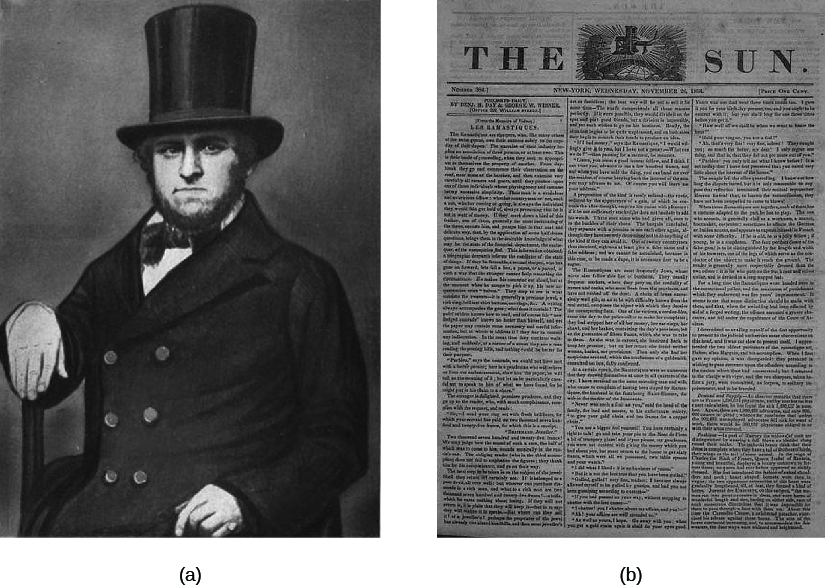| << Chapter < Page | Chapter >> Page > |

Yet readers still wanted to be entertained. Joseph Pulitzer and the New York World gave them what they wanted. The tabloid-style paper included editorial pages, cartoons, and pictures, while the front-page news was sensational and scandalous. This style of coverage became known as yellow journalism . Ads sold quickly thanks to the paper’s popularity, and the Sunday edition became a regular feature of the newspaper. As the New York World’s circulation increased, other papers copied Pulitzer’s style in an effort to sell papers. Competition between newspapers led to increasingly sensationalized covers and crude issues.
In 1896, Adolph Ochs purchased the New York Times with the goal of creating a dignified newspaper that would provide readers with important news about the economy, politics, and the world rather than gossip and comics. The New York Times brought back the informational model, which exhibits impartiality and accuracy and promotes transparency in government and politics. With the arrival of the Progressive Era, the media began muckraking : the writing and publishing of news coverage that exposed corrupt business and government practices. Investigative work like Upton Sinclair’s serialized novel The Jungle led to changes in the way industrial workers were treated and local political machines were run. The Pure Food and Drug Act and other laws were passed to protect consumers and employees from unsafe food processing practices. Local and state government officials who participated in bribery and corruption became the centerpieces of exposés.
Some muckraking journalism still appears today, and the quicker movement of information through the system would seem to suggest an environment for yet more investigative work and the punch of exposés than in the past. However, at the same time there are fewer journalists being hired than there used to be. The scarcity of journalists and the lack of time to dig for details in a 24-hour, profit-oriented news model make investigative stories rare.
In the twenty-first century, newspapers have struggled to stay financially stable. Print media earned $44.9 billion from ads in 2003, but only $16.4 billion from ads in 2014.

Notification Switch
Would you like to follow the 'American government' conversation and receive update notifications?